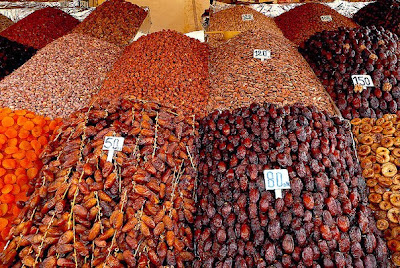A Culture of Eating, Drinking, and Being Hospitable
Dried Fruits and Nuts – Dates are a Moroccan national speciality. They are best grown in the South, from the area of Goulmima to Zagora and the Draa Valley. They are essential during the month of Ramadan, when they accompany harira as the breaker of the fast. They are also widely used in tagines. See Lahcen’s recipe for lamb tagine with prunes and dates. Figs, dried apricots and prunes are some other dried fruits which are served in tagines. Almonds and walnuts are the most commonly used nuts in Morocco. Both are used in pastilla. Almonds are used in tagines alongside dried apricots.






